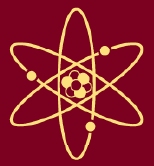PHY3221: Intermediate Mechanics - Spring 2009
| ||||||||||||||||||||||||||||||
The course is aimed mainly at physics majors, for whom this course is the first ‘serious’ mechanics course. As such, the material covered in this course will be assumed knowledge for many of your future physics courses, some of which will develop the ideas that you have met here further. Students are therefore expected to demonstrate a thorough understanding of the concepts that they encounter in this course.
In this course, we will be attempting to analyze mechanical systems (as opposed to memorising them), beginning with systems consisting of a single particle. To do this, we will use certain tools. Among these tools, several branches of mathematics, including arithmetic, algebra, trigonometry, and calculus, are indispensable. You are therefore expected to be comfortable with each of these areas in order to use them to solve physics problems.
Topics
- Coordinate systems and vectors
- Newton’s Laws
- Galilean transformation and inertial coordinate systems
- Noninertial coordinate systems
- Principle of relativity
- One-dimensional particle dynamics
- Conservation of energy, conservative forces
- Falling bodies
- Linear and nonlinear oscillating systems
- Energy balance in damped oscillating systems
- Forced oscillator, transient and driven response
- Mechanical resonance, phase and amplitude response
- Principle of superposition
- Two- and three-dimensional particle dynamics
- Coordinate systems and vectors
- Gradient, divergence, curl
- Conservative forces in 3D
- Conservation of energy and the work-energy theorem
- Planar kinematics
- Three-dimensional kinematics
- Conservation laws: linear momentum, angular momentum, energy
- Central forces, center-of-mass coordinates
- Properties of central forces, specific examples
- Inverse-square central force, Kepler’s laws, classification of orbits
- Systems of particles
- Conservation laws for linear and angular momentum, energy
- Specific examples, variable mass systems
- Classical gravitation
- Center of gravity
- Gravitational fields and potentials
- Fields from general mass distributions
